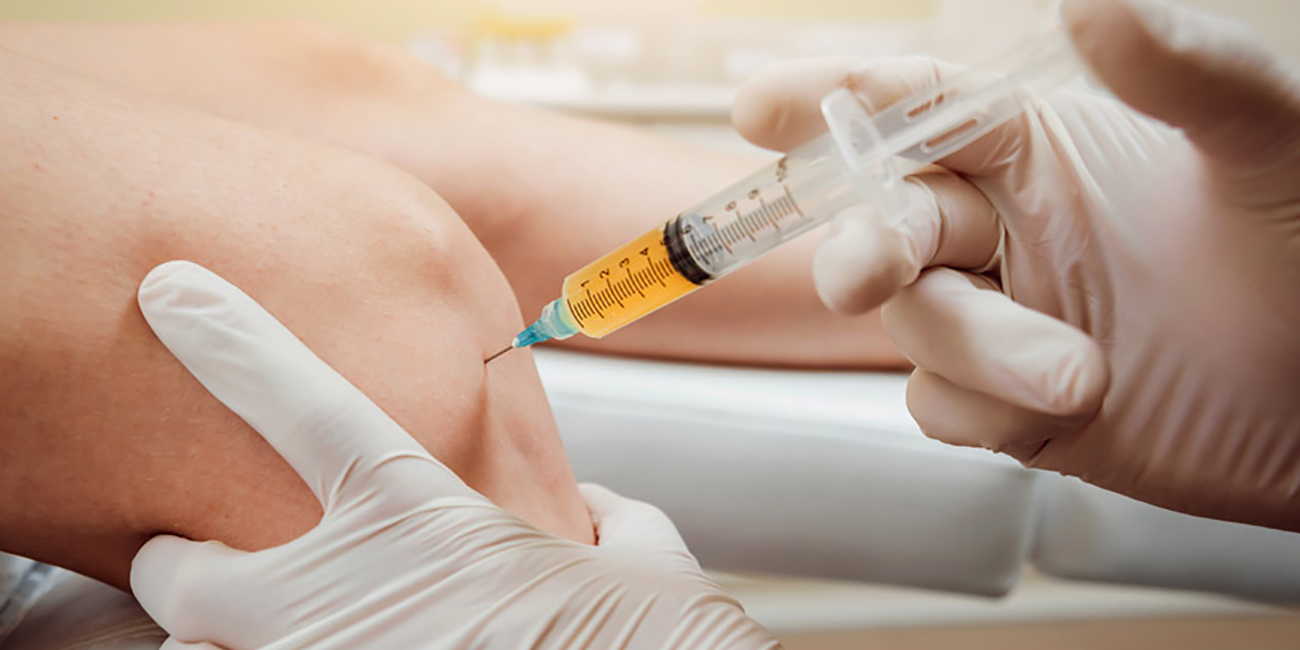Platelet rich plasma (PRP) is a natural and effective treatment method against wear and tear and inflammation of the musculoskeletal system.
The patient's own blood is prepared by centrifugation and the blood plasma is then injected into the corresponding joint, muscle or tendon.
Platelets - true heroes
When tissue is damaged by overload or wear, our body initiates repair processes. Blood platelets (thrombocytes) play a central role in this. They immediately recognize the injured area and  release growth factors and inflammation-modulating substances, which initiates and accelerates the healing process. This sensible activation of the body's own healing powers is used in PRP therapy. The patient's own blood plasma, enriched with platelets, is injected into the affected structures such as joints or tendons, which leads to a natural and lasting improvement in pain or inflammation. Coming from complementary medicine, PRP therapy is currently enjoying great popularity in orthopedics and rheumatology, particularly due to clinical studies. PRP treatment is a sensible and efficient alternative to cortisone infiltrations in these specialist areas.
release growth factors and inflammation-modulating substances, which initiates and accelerates the healing process. This sensible activation of the body's own healing powers is used in PRP therapy. The patient's own blood plasma, enriched with platelets, is injected into the affected structures such as joints or tendons, which leads to a natural and lasting improvement in pain or inflammation. Coming from complementary medicine, PRP therapy is currently enjoying great popularity in orthopedics and rheumatology, particularly due to clinical studies. PRP treatment is a sensible and efficient alternative to cortisone infiltrations in these specialist areas.
Procedure of PRP treatment, indications
In preparation for the PRP treatment, 10 ml of blood is taken from the vein and then centrifuged in a special container (RegenLab company). In this way, white and red blood cells are removed and a plasma with a high concentration of platelets is prepared.
After disinfection and local anesthesia of the affected part of the body, the doctor injects the autologous plasma produced. Depending on the response and course, the PRP injection is repeated at intervals of 2 - 4 weeks. Pain may then increase but only temporarily. In this case, it is advisable to rest the treated structure (muscle, tendon, joint) for a few days. If performed correctly, there are hardly any known side effects of PRP.
PRP treatment can be used for the following diseases of the musculoskeletal system:
- Osteoarthritis (joint wear) and arthritis (joint inflammation)
- Inflammation of soft tissue (e.g. tendonitis)
- Muscle strains and muscle fiber tears (sports injuries)
- Tendonitis (e.g. Achilles tendonitis, tennis elbow, shoulder pain)
- Support for wound healing
Costs of PRP therapy
Although widely recognized and effective, PRP therapy is currently not covered by basic insurance. Most supplementary insurance policies for complementary medicine, however, reimburse part of the PRP therapy as autologous blood treatment.


